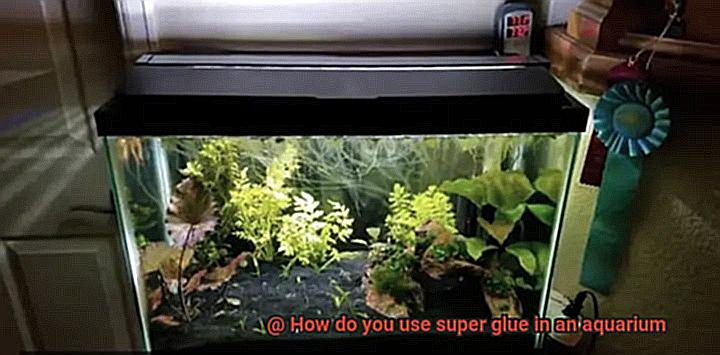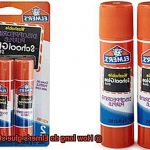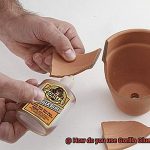Are you tired of constantly readjusting your aquarium decorations or struggling to keep live plants in place? It can be frustrating to watch them float around aimlessly, disrupting the aesthetic of your aquatic paradise. Fear not, because there’s a solution that might surprise you – super glue.
Yes, you heard that right – super glue is a popular tool among aquarium enthusiasts to securely attach items without harming their underwater environment. In this blog post, we’ll walk you through the dos and don’ts of using super glue in an aquarium.
We’ll dive into the benefits of using this adhesive, such as its impressive strength and versatility. But we’ll also discuss the precautions you need to take when using it in water to ensure the safety of your aquatic pets.
Not all super glues are created equal, so we’ll provide tips on selecting the best type for your specific needs. And we won’t leave you hanging when it comes to proper application techniques – we’ve got you covered with step-by-step instructions.
Whether you’re a seasoned aquarium hobbyist or just starting out, adding super glue to your toolkit can be a game-changer for creating the aquarium of your dreams. So let’s get started and explore how this powerful tool can help elevate your underwater world.
What is Super Glue?
Contents
- 1 What is Super Glue?
- 2 Choosing the Right Type of Glue
- 3 Working Quickly with Super Glue
- 4 Applying Super Glue to Decorations and Equipment
- 5 Using Super Glue on Live Plants
- 6 Drying the Glue Before Adding it to the Aquarium
- 7 Clouding the Water with Excess Glue
- 8 Other Uses for Super Glue in an Aquarium
- 9 Conclusion
Super glue, also known as cyanoacrylate adhesive, is a remarkable adhesive that has become increasingly popular among aquarium hobbyists. This versatile and fast-drying adhesive is highly sought after for its ability to attach decorations, plants, and even aquarium equipment with ease. However, it is important to use it properly to avoid harming the aquarium inhabitants.
Discovered by Dr. Harry Coover in 1942 while trying to create a clear plastic gun sight for the military, super glue first became available to the public in the 1950s. Super glue works by reacting with moisture in the air, causing it to harden and form a strong bond. It is capable of bonding a wide variety of surfaces, including metal, plastic, wood, and even skin. However, it is crucial to handle super glue with caution as it can bond quickly and accidentally stick to fingers or other objects.
When using super glue in an aquarium, it is crucial to choose the right type of glue. Make sure to select a glue that is labeled “aquarium safe” or “reef safe.” These types of glues are specifically formulated not to release any harmful chemicals or toxins into the water. Using other types of super glue can be harmful to your fish and other aquatic life.
It is recommended to have all materials ready and in place before starting the process when using super glue as it dries very fast. Clean and dry the area where the glue will be applied before applying a small amount of glue to one surface and quickly pressing the two surfaces together.
Hold them in place for a few seconds until the glue sets. Avoid using too much glue as excess glue can cloud the water and harm the inhabitants.
Super glue can also be used on live plants, but it is important to use it sparingly and only on non-living portions such as rock or driftwood. Applying too much glue on live plants can cause damage or inhibit their growth. Additionally, it is recommended to allow the glue to dry completely before placing the plant back in the water.
Choosing the Right Type of Glue
Choosing the right type of glue for your aquarium is not just a matter of convenience, it’s a matter of safety. The wrong glue can harm your aquatic pets and wreak havoc on the delicate ecosystem of your tank. As an expert in all things aquarium, I’m here to guide you through the do’s and don’ts of selecting the perfect adhesive.
First and foremost, the go-to choice for aquarium hobbyists is cyanoacrylate or super glue. This type of glue is safe for fish and invertebrates, dries quickly, and has a strong bond. But beware: not all super glues are created equal. Look for labels that say “aquarium safe” or “reef safe” to ensure that there are no harmful additives like solvents or accelerators lurking in the formula.
If you’re looking for an alternative to super glue, silicone adhesives are another great option. They’re waterproof, non-toxic, and have good bonding strength. However, be aware that they may take longer to dry than super glue, so patience is key.
On the other hand, there are some types of glue that you should avoid using in your aquarium at all costs. Epoxy and construction adhesives can release toxic chemicals into the water, posing a serious threat to your aquatic pets. And while hot glue may seem like a quick fix, it can melt when submerged in water, causing decorations or equipment to come loose.
Working Quickly with Super Glue
Attention all aquarists. If you’re looking to use super glue in your underwater sanctuary, you’ll need to work quickly and efficiently to avoid any mishaps. Fortunately, with some careful planning and preparation, you can achieve a seamless bonding process. Here are some tips to make sure your project goes swimmingly.
The first step is to gather all the necessary materials before starting the gluing process. This includes your super glue, applicators, and the items you want to bond together. Having everything organized and within arm’s reach will prevent you from wasting any time so that you can work quickly.
When using super glue in an aquarium, it’s best to apply it in small amounts and work in sections. This approach gives you more control over the bonding process and prevents the glue from drying out too quickly. If you’re working on a larger project, consider getting a helping hand from a friend or family member to speed up the process.
Choosing the right type of super glue is crucial for ensuring the safety of your aquatic life. Not all glues are created equal, and some may contain toxic chemicals that can harm your aquarium inhabitants. To avoid this, be sure to choose a product that is specifically designed for aquarium use and carefully read the label before applying it.
Finally, it’s important to be patient and take your time. Rushing through a project can lead to mistakes that may harm your aquarium inhabitants. By taking your time and working carefully, you’ll achieve a seamless bond that keeps your aquatic life safe and healthy.
Applying Super Glue to Decorations and Equipment
Applying super glue to decorations and equipment can be a fantastic way to secure these items in place, but it’s important to follow the right steps to ensure a safe and effective bonding process.
To begin with, it’s crucial that you clean and dry the decoration or equipment before applying any glue. Any debris or moisture can interfere with the glue’s ability to adhere properly, so take the time to wipe things down and let them air dry if necessary.
Next, select the appropriate type of super glue for your project. Gel-based glues are often preferred by aquarium enthusiasts because they’re more manageable and don’t run like liquid-based glues. It’s also important to choose a product specifically labeled for aquarium use as not all types of super glue are safe for aquatic life.
When it comes time to apply the glue, work quickly and apply a small amount directly to the surface where it will be attached. Hold the decoration or equipment in place for at least 30 seconds to ensure a durable bond. Keep in mind that super glue dries quickly, so don’t hesitate.
Safety is paramount when working with aquariums, so consider how any products or materials may impact fish and other aquatic life in your tank. Wait at least 24 hours after applying the glue before reintroducing any fish or organisms into the tank. And remember, avoid using super glue near any living creatures in the tank.
Using Super Glue on Live Plants
Using super glue can be a viable option, but it’s essential to keep certain things in mind before diving in.
First and foremost, it’s imperative to use cyanoacrylate or “super” glue that is safe for aquatic life. Other types of glue may contain harmful chemicals that can harm your plants, fish, and other aquatic life. Additionally, it’s essential to ensure that your plants are clean and dry before applying any glue.
To avoid damaging the plant, apply a small amount of glue to a non-porous surface like a rock or piece of driftwood instead of the plant itself. This technique also prevents excess glue from getting on the leaves or stems of the plant, which can cause significant damage or even kill the plant.
Placement is another crucial factor when it comes to live plants in an aquarium. Choose a spot that provides sufficient light and nutrients for the plant to thrive. Avoid placing the plant too close to any filters or equipment that could damage it.
In summary, here are some vital tips to keep in mind when using super glue on live plants:
- Use cyanoacrylate or “super” glue that is specifically designed for aquatic life.
- Ensure your plants are clean and dry before applying any glue.
- Apply a small amount of glue to a non-porous surface like a rock or piece of driftwood before attaching the plant.
- Choose a spot that provides enough light and nutrients for the plant to thrive.
- Avoid placing the plant too close to any filters or equipment that could damage it.
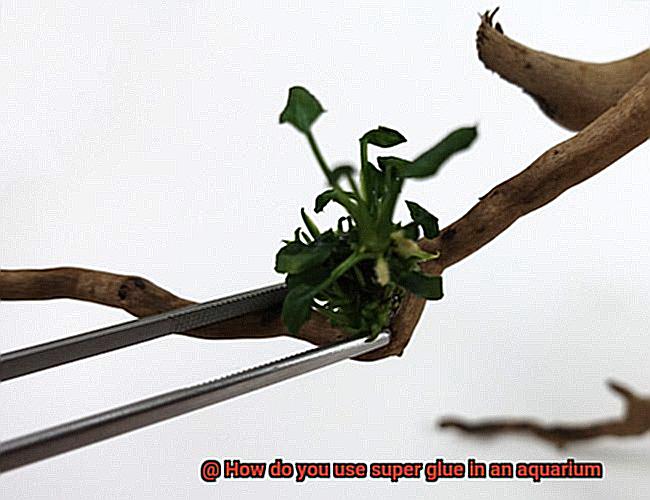
Drying the Glue Before Adding it to the Aquarium
Using super glue to attach live plants and decorations can be a fantastic way to do so. However, it’s crucial to understand the importance of drying the glue before adding it to your aquarium to avoid harming your aquatic life.
Different brands and types of glue have varying drying times, so it’s critical to read the label carefully before use. Rushing the drying process can lead to disastrous consequences, so patience is key. Waiting at least 24 hours before adding water or aquatic plants will allow the glue to cure fully and harden, making it safe for use in your aquarium.
To speed up the drying process, you might be tempted to use a fan or hairdryer. However, caution must be taken not to overheat or damage surrounding materials or aquatic life. It’s better to exercise patience and let the glue dry naturally.
It’s essential to note that not all types of super glue are suitable for use in an aquarium. Some may contain harmful chemicals that can leach into the water and harm aquatic life. Always choose non-toxic, aquarium-safe super glue specifically designed for use in aquariums.
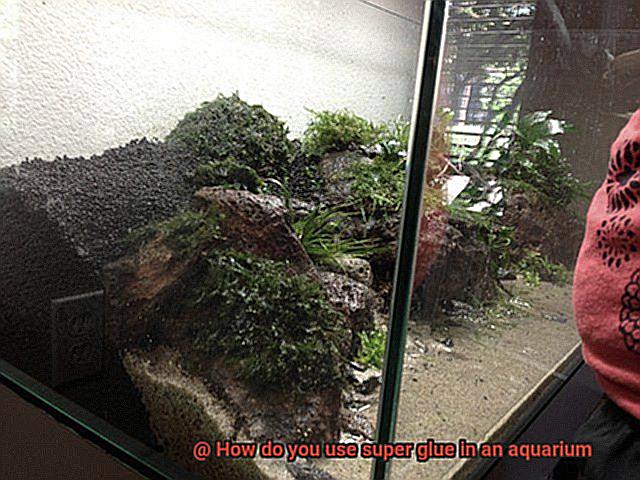
To summarize, here are some essential guidelines for using super glue in your aquarium:
- Read the label carefully before using any glue.
- Wait at least 24 hours before adding water or aquatic plants.
- Avoid using a fan or hairdryer unless necessary, and be cautious not to overheat or damage surrounding materials or aquatic life.
- Choose non-toxic, aquarium-safe super glue specifically designed for use in aquariums.
Clouding the Water with Excess Glue
While it can be an effective bonding agent, excess glue can cause cloudiness in the water, which can be harmful to your aquatic life.
To prevent this issue, it’s crucial to use only a small amount of glue and allow it to fully dry before placing any objects into the tank. Opting for a gel-based super glue can also help you avoid accidentally adding too much to your aquarium.
But what happens if you do end up with excess glue in your tank? Don’t worry – there are solutions. A partial water change, replacing about 25% of the water with fresh, clean water, can dilute the excess glue and clear up the cloudiness. Alternatively, you could use activated carbon or a water clarifier product to bind with and remove the excess glue particles from the water.
However, prevention is always better than cure. By using super glue carefully and in moderation, you can avoid this issue altogether and maintain a healthy and clear environment for your aquatic life to thrive in. Remember, excess glue can break down over time, releasing harmful chemicals into the water that could harm your fish and other inhabitants.
Other Uses for Super Glue in an Aquarium
In addition to its common uses, such as attaching coral frags and mending broken decorations, there are several other innovative ways in which super glue can be utilized in your aquarium. Let’s dive into some of these exciting possibilities.
Firstly, let’s address the dreaded issue of leaks. Accidents happen, and cracks or holes in your tank can be a cause for concern. Luckily, super glue can provide a quick and easy solution. Simply apply a thin layer of glue over the affected area and wait for it to dry completely before refilling the tank with water. Voila. The leak is sealed.
Next up, let’s talk about live plants. Do you have plants that are too heavy to be held down by substrate alone? Fear not, super glue can come to the rescue once again. By applying a small amount of glue to the base of the plant and firmly pressing it onto a rock or piece of driftwood, you can secure it in place and prevent it from uprooting.
Now it’s time to get creative. Super glue can be used to create one-of-a-kind decorations for your aquarium. Start with a base of rocks or shells and add smaller decorative elements like moss or seashells using super glue. You can even add small figurines for a personalized touch. The options are endless, and your imagination is the only limit.
Lastly, let’s address damaged filter inlet and outlet tubes. If you notice a crack or chip in your filter tube, don’t panic. Super glue can serve as a temporary fix until you can replace the part. Simply apply a thin layer of glue over the damaged area and let it dry completely before reinstalling the tube.
esbmKXmQWdY” >
Conclusion
In summary, super glue is a valuable tool for aquarium enthusiasts seeking to secure their decorations and plants while keeping their aquatic pets safe. Opting for the right type of glue labeled “aquarium safe” or “reef safe” ensures that no harmful chemicals or toxins are released into the water. It’s essential to work swiftly and apply small amounts of glue in sections, avoiding excess glue that can cloud the water and harm inhabitants.
Not only can super glue fix leaks, but it can also anchor heavy plants onto rocks or driftwood and create personalized decorations. However, using super glue in an aquarium requires caution and patience. Always read labels carefully before use, wait at least 24 hours before reintroducing fish or organisms into the tank, and avoid using too much glue.
By following these guidelines when using super glue in your aquarium, you can enhance your underwater world with ease. So why not give it a try?

